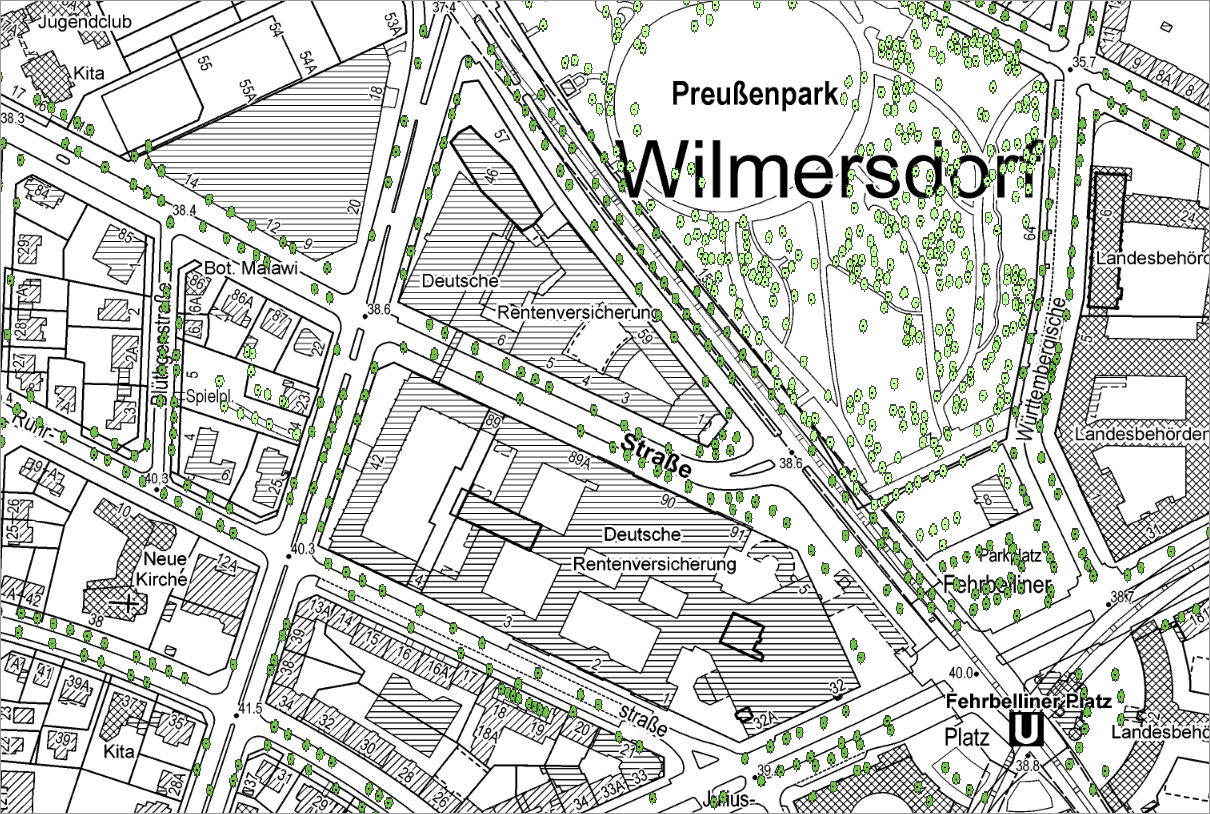- “Actual Use of Built-up Areas” (06.01),
- “Inventory of Green and Open Spaces” (06.02),
- “Urban Structure” (06.07).
In addition to this information, the maps on “Urban Structural Density” (06.09) explore the degree of structural use.
These individual separate findings, however, only provide limited insight into the vertical extent of the natural structures in the city. For this reason, the Environmental Atlas presents the height development of buildings (Map “Building Heights” (06.10.1)) and that of vegetation (Map “Vegetation Heights” (06.10.2)) in two topics. The first joint “Building and Vegetation Heights” map (06.10) was produced in 2010, as part of a project with the Institute of Optical Sensor Systems of the German Aerospace Center (DLR). Today, an official, regularly updated 3D building model is available for Berlin’s building stock, forming the basis for the “Building Heights” map (06.10.1). The “Vegetation Heights” (06.10.2) map that complements the “Building Heights” map, however, is still based on the Environment Atlas’ own analysis of aerial photography data obtained during summer flights of the respective years.
Regarding Berlin’s tree stock, a dataset that is based on the tree register of the Berlin Green-Space Information System (GRIS) is available. It includes roadside trees as well as trees growing in public green spaces and recreational areas (cf. Figure 1). However, this dataset does not include any trees in forest areas and on private land (incl. the green spaces managed by Berlin’s housing associations). Therefore, a large part of the ‘urban greenery’ is actually not mapped. A city-wide analysis of remote sensing data is required to capture the ‘urban greenery’ in its entirety from above.

